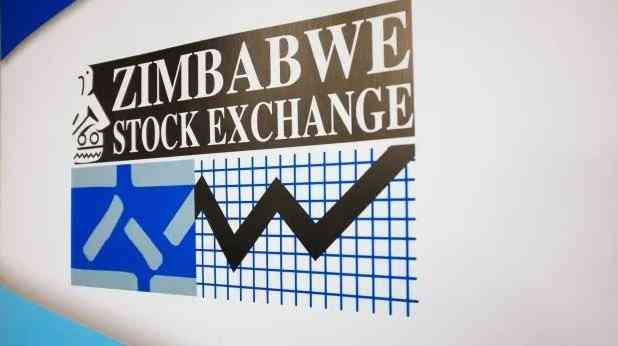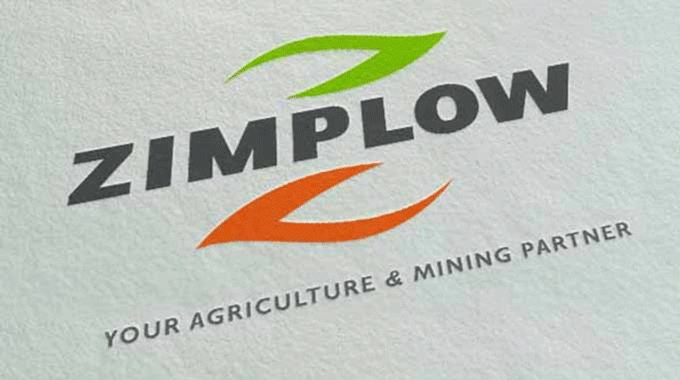
VENTURE capital (VC) finance is crucial for giving brilliant entrepreneurs a chance to prove themselves.
Since a number of emerging businesses (start-ups) do not have access to traditional forms of financing, such as bank loans, bond-issuance, or selling their equity on the stock exchange, VC is one of the only few options available to them for funding.
In order to better grasp the usefulness of VC, it may be essential to highlight some of the companies, which owe their success to it.
These include, Apple, Google, Microsoft, Yahoo, Facebook, Amazon, Intel, etc. Providing Zimbabwean businesses with “venture finance” can, therefore, enable them to establish companies, which can also become either national or global successes, or even, both.
Any government that is keen to promote entrepreneurship and create jobs will need to provide a supportive environment, for VC and entrepreneurs.
According to the African Private Capital Association (AVCA), start-ups around the world, received US$445 billion in VC funding in 2022.
(A start-up is any early-stage (nascent) business which has a strong potential for growth. Due to strong competition in markets, start-ups are rarely found within the traditional business models).
Of this amount, Africa only received US$5,2 billion. Clearly, there is much room to attract greater amounts of capital, which can be used to work for regional entrepreneurs and their respective economies.
- In the groove: Has inflation hit the music markets?
- Macaria gets courage for the zoe
- In the groove: Has inflation hit the music markets?
- Macaria gets courage for the zoe
Keep Reading
VC in Zim
The National Venture Capital Fund (NVCF) was introduced through the 2021 national budget, and assigned ZW$300 million at its inception. It is fair to commend Treasury for envisaging such a concept. If designed well, it can work for local start-ups and drive the country’s economic growth.
In the past, several early-stage businesses with Zimbabwean founders had to seek VC in other countries since there was no supportive framework available, locally. To name just a few, these include Tuverl, Dawa Health and FlexFin Tx, among others.
In coming up with the NVCF, the Ministry of Finance and Investment Promotion stated that priority would be given to projects, which can generate high employment numbers, earn foreign exchange, promote women and youth entrepreneurship. These should have high technological and developmental impact, with an internal rate of return of more than 15%.
Zimbabwe is reported to have more than three million SMEs, most of which are not registered. Other reports also suggest that approximately 75% of Zimbabwe's workforce is employed by SMEs.
Thus, the NVCF is a timely strategy, since it will likely result in more SMEs registering their businesses, especially those seeking capital injections from the government vehicle.
Additionally, with the right publicity on the work of the fund, locals will become more creative in their entrepreneurial pursuits and design more scalable businesses.
To add to regulatory support for the local VC scene, Treasury also announced tax exemptions for companies that are focused on providing VC finance to local start-ups.
Any company, whose main business is to provide VC funds locally, is not subject to income tax. This seems a lucrative opportunity for both local and foreign investors, with the right expertise in venture deals.
It is obviously a thing of wonder that there are not yet any popular firms, which have been reported to be embracing this tax incentive, as yet. It is clear that sufficient foundational work was carried out in establishing the NVCF.
Back in March 2020, permanent secretary in the Ministry of Finance and Economic Development George Guvamatanga outlined that Treasury was in discussions with the World Bank’s, International Finance Corporation, Norfund and other local partners, over investments, into the-then envisaged, NVCF.
Additionally, technical support and co-management of the fund, was requested.
Evaluation
For a balanced review of Treasury's efforts in relation to the NVCF, it is also essential to point out some areas, which need attention. To begin with, at the time of the announcement of the NVCF in November 2020, the formal interbank exchange rate (US$/ZW$) was around ZW$80: US$1, whilst, the parallel rate was ZW$100:US$1.
Using the parallel rate, the ZW$300 million is, therefore, the equivalent of just US$3 million.
Regrettably, such an amount is too modest to drive meaningful national impact.
In the US, for example, VC investments range between 0,2% to 1% of GDP, yearly. If Zimbabwe were to achieve as much activity, that would imply; between US$40 million-US$200 million in VC investments, each year (using a GDP of US$20 billion).
It is, therefore, vital for the Ministry of Finance and Investment Promotion to consistently mobilise more VC funds and encourage other funding partners to participate. Only then, can the nation's start-ups significantly contribute to employment and economic growth.
The limited publicity, which the NVCF received, seems to be as a result of the timing of its launch, which was in the midst of the Covid-19 pandemic (November 2020).
Back then, people were more concerned about practicing social distancing and surviving Covid. In this regard, Treasury may need to continually run informational campaigns, which create more public awareness on the existence of this vehicle, its successes to date, when it will wind down and when new VC funds will be made available.
This will serve to attract more start-ups with brilliant business models, if there are still unassigned financial resources. Additionally, more foreign VCs are likely to enter the Zimbabwean market, when they discover the government's willingness to support local entrepreneurship.
Supplementary recommendations
In other countries, a considerable number of non-financial corporations have ultimately established their own VC departments.
A good example is Naspers, in South Africa, which had a R1,4 billion (US$77 million) VC branch, which operated between 2019 and March 2023. Beyond Africa, this practice is common in the US, Australia, New Zealand and other advanced economies.
In this regard, the government may also encourage local firms to participate in VC as a means of social responsibility or of acquiring high quality assets, in the form of local start-ups, which have a high-growth potential.
In the US, pension funds are part of the VC sector, although, using strict prudential methods. This ensures that high quality VC assets are also accessible to them.
The situation is also the same in South Africa, as VC investments in start-ups can be held within the prescribed assets of pension funds and other institutional investors.
In Zimbabwe's case, there is also room to make provision for such. Enabling insurance, public and private pension funds, or even financial institutions to hold up to 5% of assets in VC investments has the potential to trigger major activity in the local start-up ecosystem. Nevertheless, impermeable control mechanisms will be crucial in order to avoid the abuse of this system by the fraudulent.
Zimbabwe also seems ready for a VC association, which is a formal group representing the interests of local and foreign firms operating within the domestic VC space.
South Africa has the Southern African Private Equity and Venture Capital Association (SAVCA), which has proven useful in sharing knowledge on opportunities and threats for the benefit of all its members.
SAVCA also provides a platform for its members to express their concerns and recommendations, which they need to be taken note of by the government.
Evidently, this streamlines negotiations with government and makes it easier to lobby for particular regulatory support. Currently, SAVCA is among the proponents of the Start-up Act Movement, which is gearing for certain legislative changes aimed at improving the business environment for VC firms in SA.
To prove the effectiveness of the Start-up Act Movement, President Cyril Ramaphosa has made some nationwide regulatory changes (in work visa provision for start-up staff) and on some occasions personally held meetings with the group over their concerns.
A VC association is also crucial for the establishment of accurate VC data, which shows, growth or decrease in local VC deals, among other things. Reliable records assist towards establishing a fair evaluation of the state of the VC sector.
Tax incentives for high net-worth individuals, who provide VC on a retail (individual) basis are also likely to encourage more activity in the local sector. These may be tax concessions for VC investments of US$10 000 and above, for instance.
Learning from the best
In Switzerland, VC firms provide major support to start-ups, which have their roots in university spin-offs. This means that technology designed at technical-universities has a strong chance of finding VC backers in the country.
Additionally, it has been statistically determined that such start-ups have a strong likelihood to succeed, with some, showing a 90% probability of business continuation.
Locally, this is the equivalent of the NVCF placing emphasis on offering support towards projects originating from the Harare Institute of Technology (HIT), National University of Science and Technology (Nust), etc.
In Israel, high-technology solutions attract VC funds beyond the country's relative size. The statistics show that, as of 2017, there were a total of 70 operational VC firms, including 14 international ones, with offices in the country.
There were also an additional 220 foreign VC companies, which either invest regularly, or actively search for new Israeli firms. At that time, about two-thirds of VC funds were from foreign sources.
Several recipient-businesses moved on to become successful enterprises in foreign markets (such as the US). This shows the importance of having specialised sectors (such as technology), which establish competitive advantage in the global VC market.
For Zimbabwe, agriculture, mining-technology and biotechnology, offer opportunities for such competitive advantages, if the established local value chains, education sector and government are determined to achieve that.
On the continent, it can pay handsome rewards to imitate Nigeria, Kenya, Egypt and South Africa, which received US$1,2 billion, US$1,1 billion, US$820 million and US$555 million, respectively (in 2022). The United States is the largest VC destination, globally, taking up as much as US$225,5 billion in 2022.
The regulatory environment, entrepreneurial culture and robust domestic economy (which provides markets), offer numerous lessons and epiphanies for anyone keen to understand VC dynamics, thoroughly.
- Tutani is a political economy analyst- [email protected]










